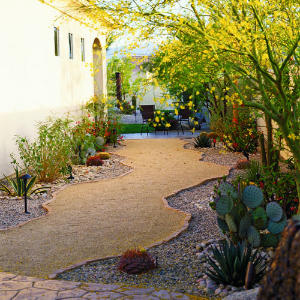It has spectacular fall color and some varieties can have that color throughout the growing season. Regardless of the color the foliage and shape of the trees is one of the most interesting aspects of its look.
Pictures just can do Justice to the overall feel of this plant.
If you a protected, part shade or full shade area in your landscape then you have a great opportunity to add one of these remarkable specimens. These are actually understory trees that will need protection from the mid-summer heat in our area. Other than they adapt well to our soils and thrive if placed in the right spot.
There are many varieties of Japanese Maples and they come in many different shapes, sizes and colors.
A selection of notable or popular cultivars, with brief notes about characteristics that apply during at least one season, includes the following.
- 'Aka shigitatsu sawa', pinkish-white leaves with green veins
- 'Ao ba jo'—a dwarf with bronze-green summer foliage
- 'Atropurpureum'—wine-red, including new branches
- 'Bloodgood'—an improved cultivar of 'Atropurpureum'
- 'Butterfly'—small leaves with white borders
- 'Dissectum'—lace-like leaves, drooping habit
- 'Golden Pond'—greenish-yellow summer foliage
- 'Goshiki koto hime'—a delicate, variegated dwarf
- 'Higasa yama'—crinkled leaves variegated with yellow
- 'Hupp's Dwarf'—a small, dense shrub with miniature leaves
- 'Issai nishiki kawazu'—very rough, rigid bark
- 'Kagiri nishiki'—similar to 'Butterfly' but more pinkish tones
- 'Karasu gawa'—slow-growing variegate with brilliant pink and white
- 'Katsura'—yellow-green leaves tipped with orange
- 'Koto no ito'—light green, thread-like leaves
- 'Little Princess'—a sparsely-branched dwarf with irregular habit
- 'Mama'—a bushy dwarf with extremely variable foliage
- 'Masu murasaki'—a shrubby tree with purple leaves
- 'Mizu kuguri'—orange-tinted new growth and very wide habit
- 'Nishiki gawa'—pinetree-like bark desirable for bonsai
- 'Nomura nishiki'—dark purple, lace-like leaves
- 'Ojishi'—tiny dwarf, grows only a few centimetres per year
- 'Osakazuki'—tree-like shrub with spectacular autumn colour
- 'Peaches and Cream'—similar to 'Aka shigitatsu sawa'
- 'Pink Filigree'—finely dissected, brownish-pink leaves
- 'Red Filigree Lace'—delicate, finely dissected, dark purple
- 'Sango kaku'—"coralbark maple" with pinkish-red bark
- 'Seiryu'—a green, tree-like shrub with finely dissected leaves
- 'Shikage ori nishiki'—vase-shaped shrub with dull purple foliage
- 'Skeeter's Broom'—derived from a 'Bloodgood' witch's broom
- 'Tamukeyama'—finely dissected, dark purple, cascading habit
- 'Tropenburg'—slender, upright grower, convex lobes, purple leaves
- 'Tsuma gaki'—yellow leaves with reddish-purple borders
- 'Yuba e'—upright tree with scarlet variegation
If you have the right spot to plant one, then by all means go shopping, pick out the one for you and enjoy the peaceful, easy feeling this tree can bring to your outdoor space.






































